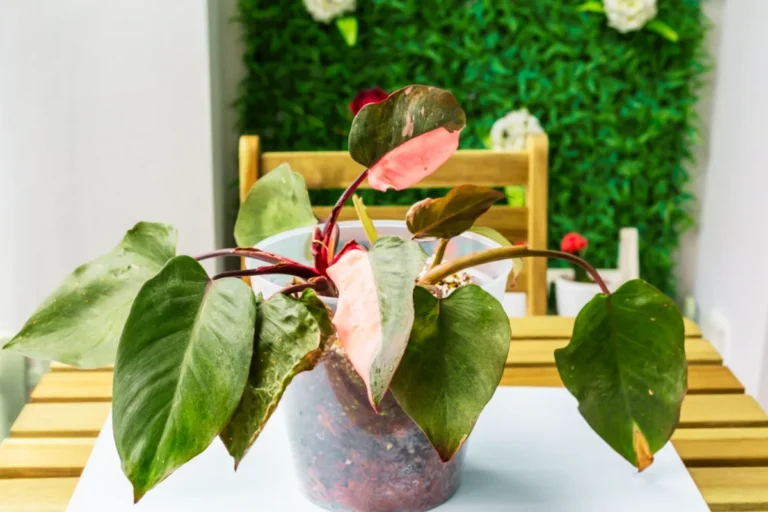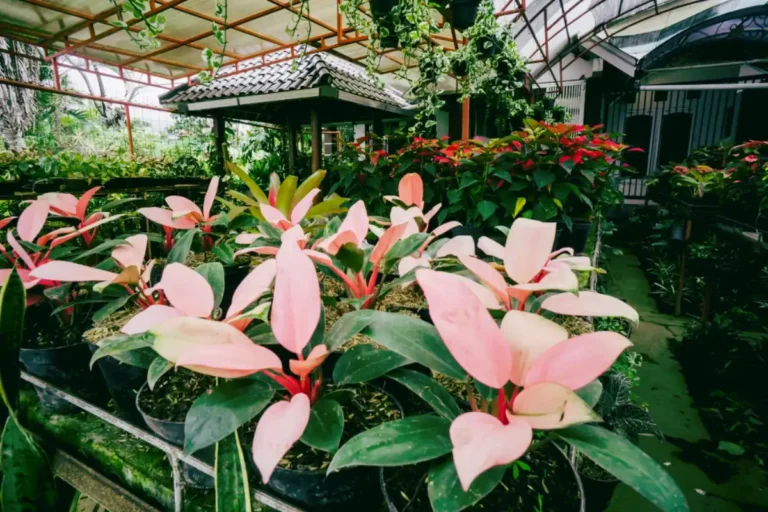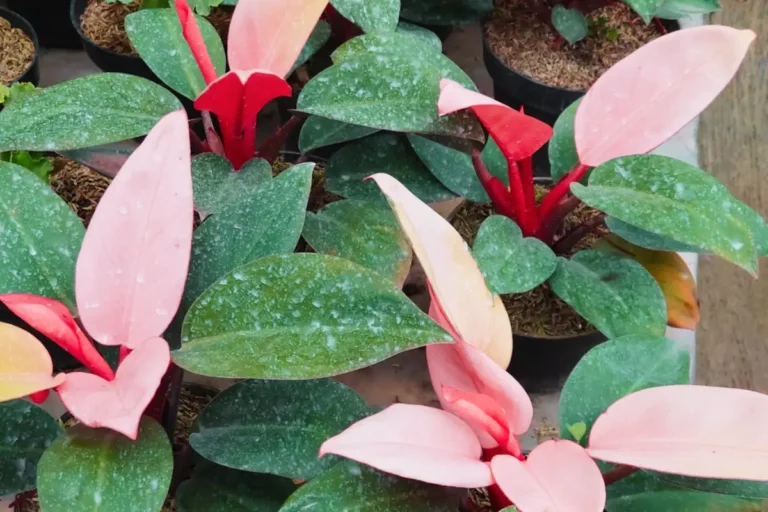Pink Princess Philodendron: Care and Buying Guide
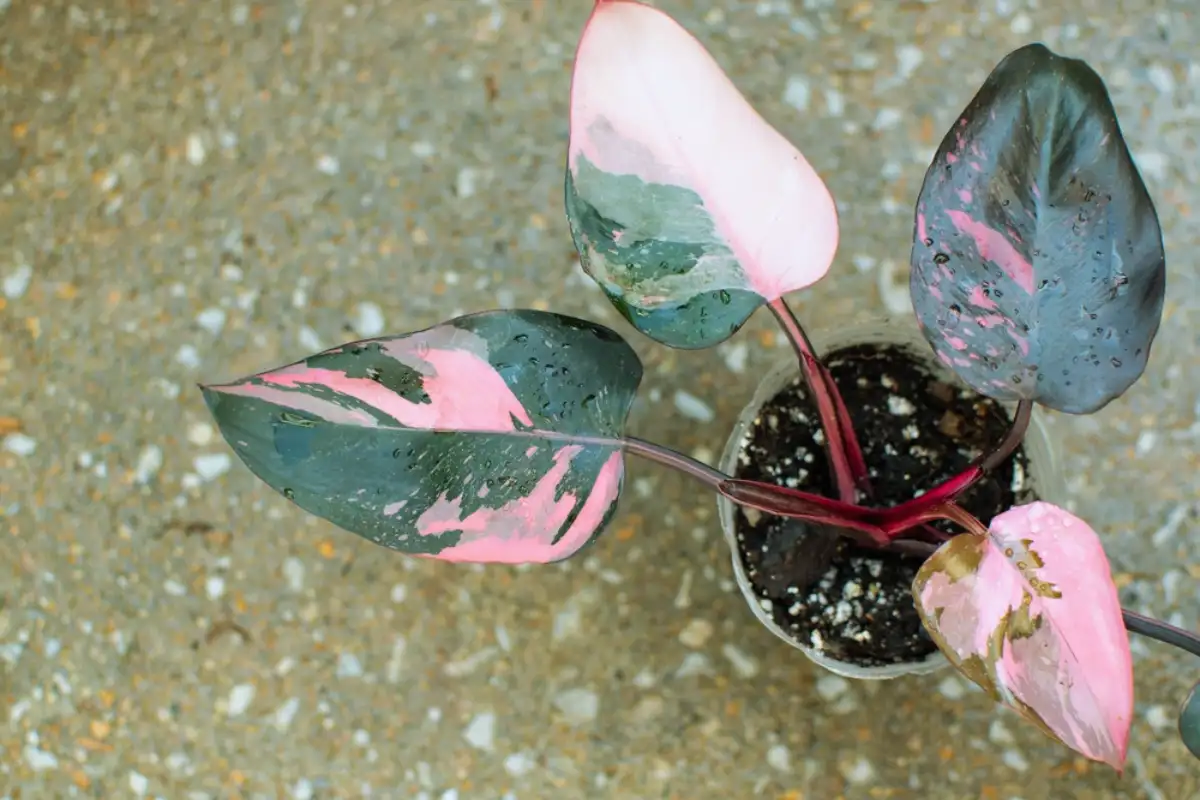
The pink princess philodendron, known botanically as Philodendron erubescens, has earned its place as a must-have among plant lovers. Its deep green leaves, streaked with soft pink, look almost painted—and no two are ever the same. But what makes it special isn’t just how it looks. There’s something genuinely rewarding about learning to care for it and watching those pink tones thrive. Luckily, it doesn’t ask for much—just bright, indirect light, some humidity, and a bit of patience. For many, that’s all part of the fun.
Philodendron Pink Princess Plant Profile
Feature | Details |
|---|---|
Botanical Name | Philodendron erubescens ‘Pink Princess’ |
Common Names | Pink Princess Philodendron, Blushing Philodendron |
Plant Family | Araceae |
Plant Type | Perennial tropical plant |
Mature Size | 4–5 ft. tall, 2–4 ft. wide |
Sun Exposure | Bright indirect light / Partial sunlight |
Soil Type | Loamy, well-draining, moist, rich in organic matter |
Soil pH | Slightly acidic (around 5.5–6.5) |
Bloom Time | Spring to Summer |
Toxicity | Toxic to cats, dogs, and humans if ingested |
USDA Hardiness Zones | 9a, 9b, 10a, 10b, 11a, 11b |
Native Area | South America (mainly Colombia) |
Buying a Pink Princess Philodendron
What Makes Pink Princess Philodendrons Expensive?
At their peak in 2021, a fully established mature pink princess philodendron could cost upwards of $2,000, with single-leaf cuttings of the coveted plant selling for hundreds of dollars on Amazon, Etsy, Facebook, and other Marketplace. As rare tropical plants with stunning, variegated foliage from mutation, not seed, limited supply and high demand drove prices up. Now more accessible and affordable, a few well-established, highly variegated ones still sell under $50, with cuttings as low as $5 to $10.
What to Look for When Buying a Pink Princess Philodendron
- Pick a healthy specimen plant.
- Confirm it’s a Pink Princess Philodendron, clearly variegated.
- Check foliage, leaves, petioles, and stems for variegation.
- Avoid infected ones with brown spots, spot, fungal diseases, or rust.
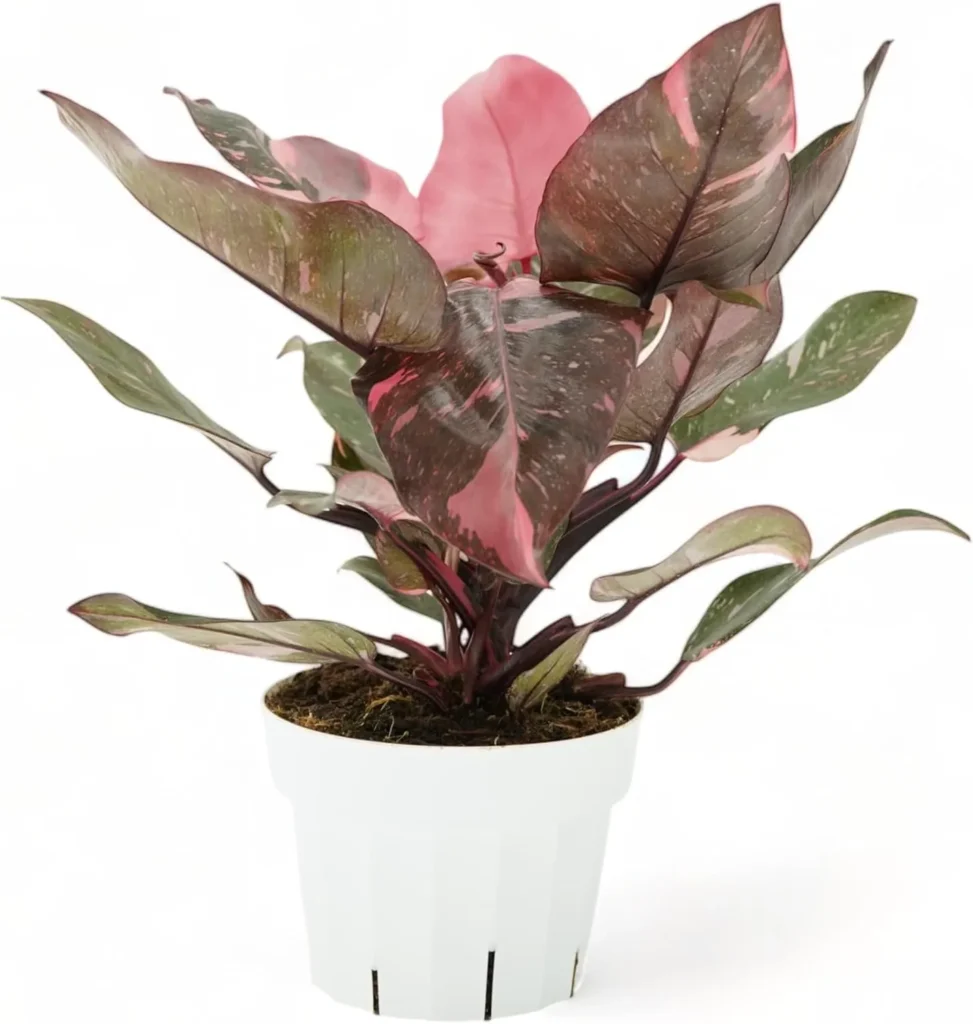
Elegant Philodendron Princess House Plant – Rare Pink Plants
Tips for Beginners
Where to Place: Put your Pink Princess Philodendron in bright, indirect light for a few hours daily.
How to Water:
Water only when the soil is dry. In summer, this is usually once a week.
Best Soil:
Use a mix of potting soil, perlite, and orchid bark for good drainage.
Pink Princess Philodendron Care Guide
The pink princess philodendron is a rare tropical plant from Colombia with bold, colorful leaves that make it a favorite for collectors. Even though it looks high-maintenance, it’s actually pretty chill if you know what it likes. Give it the right light, some humidity, and don’t rush it—this plant takes its time. But if you’re patient, you’ll be rewarded with those beautiful pink streaks everyone’s always talking about.
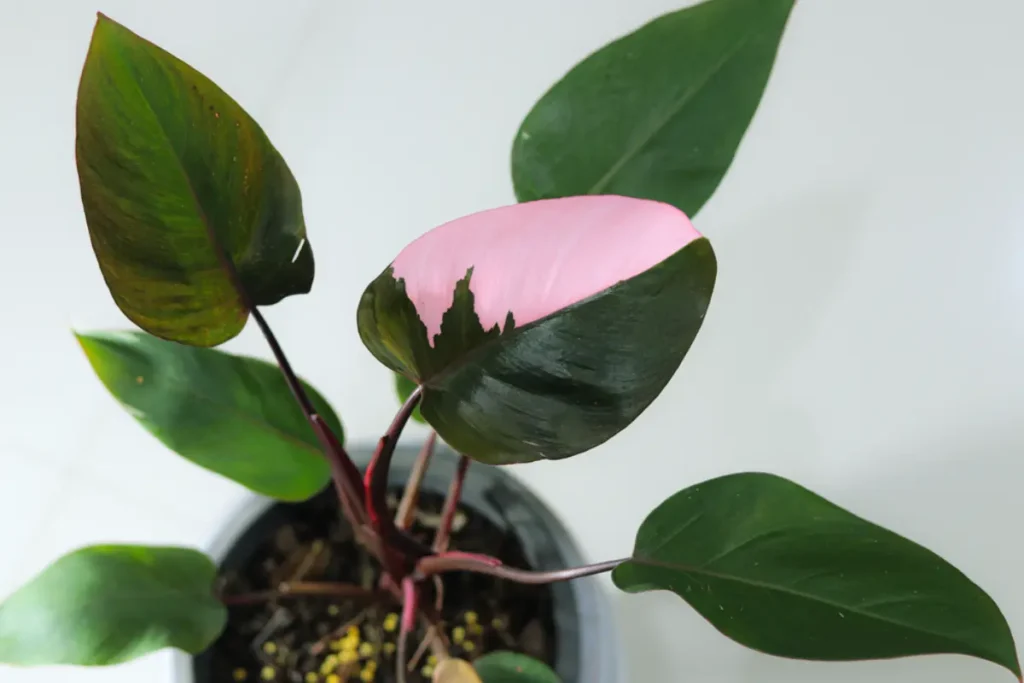
Light Requirments
To keep your pink princess philodendron looking stunning with bold variegation, provide several hours of bright, indirect light daily. This popular houseplant, when grown indoors, can tolerate a few hours of direct sun, but too little light won’t be enough—its leaves may turn fully green, losing their pretty pink color the plant is known for. Many enthusiasts grow it under supplemental lighting to maintain vibrant hues.
Watering
To keep your pink princess philodendron healthy, allow the top half of the soil to dry between waterings, then water it well. In spring and summer, approximately once a week is usually enough; in fall and winter, aim for every one to two weeks. It’s easier to err on the side of caution—if you’re unsure, wait another day.
This rule helps prevent overwatering or underwatering your plant, as its needs can vary. Each watering should be considered carefully, based on your environment and routine, to support long-term care and growth.
Soil
For the pink princess philodendron, use a loose, airy, and well-draining soil mix, as this tropical aroid dislikes soggy roots. An ideal mixture is one part standard potting soil, one part perlite, and one part orchid bark. Ensure the mix is high in organic matter to support healthy growth.
Temperature and Humidity
The Philodendron erubescens pink princess thrives in warm, humid conditions, though it adapts to typical household temperature and humidity levels. Ideally, keep the plant where temperatures stay between 64–80°F and avoid exposing it to anything below 60°F. These hardy plants do best with steady warmth and moisture.
Fertilizer
The pink princess philodendron thrives during its growing season in spring and summer with regular monthly feedings of a balanced liquid fertilizer, offering visible benefits to its health and color.
Repotting Pink Princess Philodendron
Plant lovers definitely wants to keep their variegated pink princess philodendron thriving, it’s best to repot once every year or two years. it should be in spring or summer, when roots start pushing through drainage holes or the container feels tight.
Method of Repotting (Step-by-Step)
- Gently remove the plant from its pot and inspect the root ball.
- Loosen the roots and shake off old soil to prepare for transfer.
- Choose a new pot, slightly larger in diameter than the previous one.
- Add fresh, well-draining soil—ideally with one or more drainage holes.
- Place the plant, hold it steady with one hand, and fill around with soil.
- Water thoroughly, allowing excess to drain fully.
- Return it to its original location and resume a regular watering schedule.
Propagating Pink Princess Philodendron
Philodendron erubescens pink can be easily multiplied through propagation, which not only promotes a bushier plant but also helps maintain vibrant variegation and prevents leaves from starting to revert. Using cuttings from a healthy stem, this method is simple and effective when done with care and the right tools.
- Use sharp, sterilized pruning shears or scissors to cut a clean piece of stem.
- Choose a cutting with two to three leaves and exposed nodes at the bottom.
- Remove the lower leaves, leaving the top ones.
- Place the cutting in water at a location with bright, indirect light.
- Ensure nodes stay fully submerged at all times and replace with clean water each week.
- In a few weeks, you’ll notice roots sprouting and grown about an inch in length.
- Once ready, transfer to soil with a well-draining potting mix and water thoroughly.
Common Pests & Plant Diseases
The variegated pink princess philodendron is a common houseplant, but it’s susceptible to pests like aphids, mealybugs, spider mites, scale, and fungus gnats. Overwatering often leads to root rot, a result of trapped moisture. Fungal diseases, including rust spots and infection, are also a risk. A number of these issues can affect any philodendron princess if not monitored.
Problems With Pink Princess Philodendron
Even with proper care, the philodendron erubescens pink may face occasional problems that stem from environmental conditions, such as poor lighting, low humidity, or irregular watering. Identifying and addressing these issues early can help protect the plant’s delicate leaves and maintain their striking variegation.
Leaf Browning and Dry Edges
Browning or crisp edges are typically the result of low humidity, which leads to the drying of delicate foliage. This can eventually turn the pink areas brown. To prevent this, consider using a humidifier to increase indoor moisture or grouping your tropical plants together.
Burn Marks on Leaves
When delicate pink spots are exposed to harsh lighting, burning can occur, resulting in large blemishes that cannot be reversed. These areas are especially prone to damage, so provide filtered light to prevent harm.
Fading or Lost Variegation
If the variegation is fading or the leaves have fully reverted to green, the plant likely suffers from a lack of indirect light. To fix this, move it to a brighter location, but avoid direct sunlight which could cause burn.
Leggy Growth
A leggy appearance is an indication that the plant is not receiving enough light. The growth will reach unnaturally, leaving wide gaps between leaves. See this as a sign to reposition your plant to ensure strong and balanced development.

